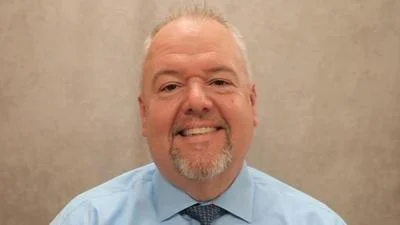DuPage County CDC Executive Committee met August 1.
Here is the minutes as provided by the committee:
1. Call to Order
11:35 am meeting was called to order by Chairman Tim Elliott at 11:39 am.
11:35 am or Immediately Following Home Advisory Group
2. Roll Call
A visual roll call was obtained which included confirmation of Wiley via phone due to his
Military Duty.
Present: Anderson, Bastian, Chaplin, Chrisse, Elliott, Grill, Krucek, Tornatore, Wiley (Remote)
Absent: Berley, Chassee, Grasso
Staff Present: Mary Keating, Community Services Director; Jennifer Chan, Community
Development Administrator; Christopher Ragona, Community Development Manager; Julie
Hamlin, Sr. Community Development Specialist; Barb Temborius, Community Development
Specialist; Therese Witkus, Community Development Specialist; Christopher Donovan,
Community Development Specialist; Dorin Fera, Community Development Specialist; Tom
Schwertman, Community Development Specialist; Nicole Rashan, Principal Account Clerk
and Anthony Mistretta, Community Development Intern.
State’s Attorney - Patrick Collins.
Others Present: Karen Ayala, Executive Director - DuPage County Health Department;
Dennis Brennan, External Affairs Manager - DuPage County Health Department, Anne
O’Dell, Executive Director - H.O.M.E. DuPage Inc., and Ruth Broder - City of Naperville.
3. Public Comment
There was no public comment.
4. Approval of Minutes
A. CDC - Executive Committee - Regular Meeting - Jul 11, 2017 11:35 AM
There was no discusison.
On a voice vote, the motion passed.
Result: Accepted [Unanimous]
Mover: Elizabeth Chaplin, District 2
Seconder: Janice Anderson, District 5
Ayes: Anderson, Bastian, Chaplin, Chrisse, Elliott, Grill, Krucek, Tornatore, Wiley
Absent: Berley, Chassee, Grasso
5. Action Items
A. Action Item -- Recommendation to approve a request from Ray Graham Association for
Persons with Disabilities, Project Number CD17-09, for additional funds in the amount of
$18,275 bringing the total to $268,275.
Chan informed the Committee that the increase in funding for Ray Graham’s 2017
project will allow for an additional bathroom to be remodeled. The additional funding is
available in a 2017 line item.
There was no discussion.
Result: Accepted [Unanimous]
Mover: Sam Tornatore, District 1
Seconder: Janice Anderson, District 5
Ayes: Anderson, Bastian, Chaplin, Chrisse, Elliott, Grill, Krucek, Tornatore, Wiley
ABSENT: Berley, Chassee, Grasso
B. Action Item -- Recommendation to approve a policy waiver request for the DuPage
County Health Department to invest 2017 CDBG funds in the City of Naperville.
Keating stated this item was related to the discussion from the last meeting (July 11,
2017) about providing funding to the DuPage County Health Department to purchase two
CILA (Community Integrated Living Arrangement) homes that are currently owned by
NAMI DuPage. The homes are occupied by clients of the DuPage County Health
Department.
One of the homes is located in Naperville. Naperville receives its own CDBG funds.
Typically DuPage County would not invest CDBG funds in Naperville. However the
County is not precluded from investing funds in the City of Naperville as long as it can
be demonstrated that investing these funds will further the cause and purpose of the
CDBG funds, and that the services and amenities afforded by those funds, will be
available to any resident of DuPage County. The Health Department serves all of
DuPage County, including the City of Naperville. Keating specifically stated that if and
when slots were to open in the Naperville CILA, those slots would be open to any health
department client from anywhere in DuPage County.
This request is a departure from the CDC’s normal policy. For that reason, it is a
requirement to acknowledge it as a waiver of the current policy. CDBG funds have been
invested outside of DuPage County previously, the most recent being the Northern
Illinois Food Bank facility located just outside of DuPage County in Kane County. The
largest percentage of clients who receive services are from DuPage County. As long as
the benefit to DuPage residents can be demonstrated, there is no statutory or regulatory
ruling preventing this.
Bastian, who was absent on July 11th, requested verification that the substantial benefits
outside the nonparticipating municipality falls within the mission of the CDBG program.
Keating stated that was correct.
Krucek asked for confirmation that using these funds would not impact any of the other
projects to be funded with 2017 CDBG monies. Keating said no. At the July 11th
meeting, discussed was the amending of the Action Plan. There is unobligated money
available through the FY2016 administration funds, the Single Family Rehab program
and other projects coming in under budget.
Wiley asked if this indicated the need to change policies or practices. Keating believed it
did not. It was felt that the majority of the investments should be made outside of the
City of Naperville because Naperville receives its own funding specifically to serve
Naperville only. If it were the general practice to invest in Naperville, there would be an
overlap in benefits to the City of Naperville. The City of Naperville’s population is not
included in the calculation that creates the County’s allocation. Keating would not
recommend, as a practice, expanding the policy to automatically allow investment in the
City of Naperville.
Ruth Broder, CDBG Administrator and the HOME Advisory Group Representative from
the City of Naperville was in attendance. Broder felt that under normal circumstances the
city would have been very favorable to an application of this type. However, as
mentioned in the memo, the City of Naperville’s full allocation is approximately
$450,000. Naperville would not have been able to fund the full amount. NAMI or the
Health Department would have still had to ask for additional financial assistance. The
way the city of Naperville’s funding cycle is structured, 2017 funds have already been
allocated. It was her understanding that it was not possible to wait for the 2018 cycle.
Keating said that is correct. There is a sense of urgancy since NAMI is actively seeking a
buyer for these properties.
Tornatore, in full disclosure, stated he sits on the Health Department board and if the
Health Department can purchase these buildings its clients will be able to continue to live
in these homes. If the Health Department cannot, it was quite possible the clients would
be displaced.
There was no further discussion.
On a voice vote, the motion passed.
Result: Accepted [Unanimous]
Mover: Janice Anderson, District 5
Seconder: Elizabeth Chaplin, District 2
Ayes: Anderson, Bastian, Chaplin, Chrisse, Elliott, Grill, Krucek, Tornatore, Wiley
Absent: Berley, Chassee, Grasso
C. Action Item -- Recommendation to approve modifications to the Neighborhood
Investment, Capital Improvement, and Public Service applications as part of the 2018
CDBG funding round.
Chan said the department is preparing for its 2018 CDBG application round. There are
four main changes the staff wants to present to the Committee.
1. Several years ago, a policy change was made allowing only Housing and Homeless
service providers to apply for public service funds. Since doing this, the same applicants
are funded on a continual basis. To streamline the funding process for the 2017 and 2018
years, it is proposed that the awards be based on the last two years of funding providing
the agencies prove they are still meeting the national objective and submit minimum
requirements.
These are the last two years of the current five-year Consolidated Plan that has the
demonstrated data on need level. While still operating under the same need level, it was
felt it was safe to propose this change.
2. Staff would like to add a “Past Performance” category. This is to award subgrantees who
turn in their reporting documents in a correct and timely manner.
3. The weighting of points of applications need to be adjusted. Currently the scoring is
heavily weighted for priority need and low-mod income beneficiaries. In doing so,
projects that score well in those two categories were almost guaranteed funding. It was
felt that a change in weighting was necessary to allow for consideration of other
application categories such as past performance, agency capacity, project budgeting and
leveraging. More points will be awarded to emphasize the actual readiness of the project.
4. The last change will be to require additional documentation demonstrating meeting of the
national objective based on the results of HUD’s 2016 monitoring letter.
Krucek asked if these changes would create a disadvantage for any new applicant. Chan
stated that the public service request is capped at $50,000. When averaged out, the
highest amount awarded is approximately $30,000 and then down to the teens. Currently,
staff is unaware of any new potential applicants.
Keating made one correction stating that the Housing and Homeless and Neighborhood
Resource Centers receive public service dollars. Under the Housing and Homeless, one of
the major criteria is to be an active member of the Continuum of Care through
participation in committees and in the Homeless Management Information System
(HMIS). Keating believes that all of the major players receive Housing and Homeless
CDBG funds. If a new applicant came in, it may be at a disadvantage. This, however,
may not be a bad thing, because of all of the funds managed, not only in Community
Development but Community Services overall, an agency is scrutinized to see how well
integrated the organization is into the fabric of the nonprofit community; are they already
partnering with other nonprofits, or are they new to the area and are unaware of the
services already being provided. It may be a challenge for a new applicant to score well.
The Human Services Grant fund, (a county general fund) has a lower cap for new
applicants, which is what is being proposed for the CDBG funds. The County wants to
see that the new organization is established and working in partnership with the activities
already available.
Krucek asked if an organization has worked outside the area, do they get any credit for
that. Keating stated typically no, due to the Housing and Homeless requirement of
having to participate in the Continuum of Care. The organization may be qualified, but
because it would not be a part of the Continuum of Care it more than likely would not
score well enough to be funded. Specifically, the County does not want organizations
that are coming into the area to provide services with an underlying goal of expansion of
its donor base. The County wants to make sure it is supporting agencies with a proven
track record serving DuPage County residents.
Chrisse asked about the maximum award amount of $10,000 per new agencies. Are new
agencies capped at $10,000 because they don’t have the average of prior years. Keating
said that a new applicant can apply for $10,000; keeping in mind that the public service
funding is a pool and $10,000 would be deducted from that pool. In the grant world this
is not an uncommon practice to cap the amount for new applicants.
Chrisse supposed that there is not enough money to fully fund all agencies, and if a new
agency is not funded the one year, then the following year, they technically would still be
a new applicant and would still have the $10,000 maximum. In terms of distribution,
there could be some agencies that apply year after year and don’t receive funding.
Keating said the public services funding works differently. As a comparison, with
CDBG capital projects, the top scoring applicant is funded its full requested amount and
then the rest are funded until funds are exhausted. Public service is a pool. All the
agencies that meet the minimum thresholds receive funds. The amount of funding
received is based upon the percentage of the total applicants relative to the other
applicants’ scores.
Chaplin asked if a new organization that has been in DuPage County for 50 years, but is
requesting funding for the first time, would they be a new applicant with the $10,000 cap.
Keating said yes.
Anderson mentioned the “Do Good DuPage” initiative. She would want to encourage
more collaboration with the existing organizations already established in DuPage County.
On a roll call vote, all ayes, no nays, the motion passed.
Result: Accepted [Unanimous]
Mover: Patrick Grill, Vice Chair
Seconder: Elizabeth Chaplin, District 2
Ayes: Anderson, Bastian, Chaplin, Chrisse, Elliott, Grill, Krucek, Tornatore, Wiley
Absent: Berley, Chassee, Grasso
D. Action Item -- To approve a policy allowing for leased properties to be eligible for the
investment of CDBG funds including the recording of a 20 year mortgage against the
property and 20 year lease requirement from the tenant.
Chan stated that this item is a cleanup of an old policy. The plan is to periodically bring
these policy revisions to the Committee for approval.
The original policy was more of a valued-based approach. The goal is to simplify the
policy and bring it more in line with the current property-owned policy. If property is
leased, participation of the owner is required, along with a 20 year lease and a 20 year
lien placed on the property. Many of the nonprofits currently have long-standing
relationships with the landlords.
There was no discussion.
On a roll call vote, all ayes, no nays, the motion passed.
Result: Accepted [Unanimous]
Mover: Sam Tornatore, District 1
Seconder: Elizabeth Chaplin, District 2
Ayes: Anderson, Bastian, Chaplin, Chrisse, Elliott, Grill, Krucek, Tornatore, Wiley
Absent: Berley, Chassee, Grasso
6. Other Business
There was no other business.
7. Adjournment
Grill made the motion, seconded by Chaplin, to adjourn the meeting at 12:01 p.m.
8. Next Meeting Date - September 5, 2017
http://dupage.iqm2.com/Citizens/FileOpen.aspx?Type=15&ID=6092&Inline=True






 Alerts Sign-up
Alerts Sign-up